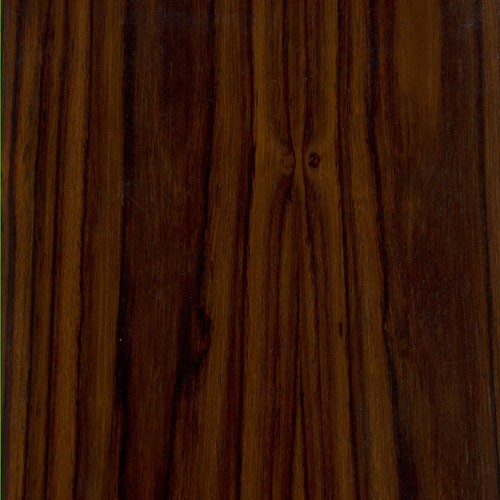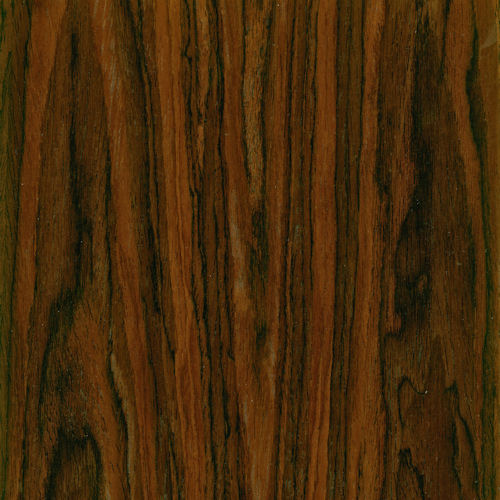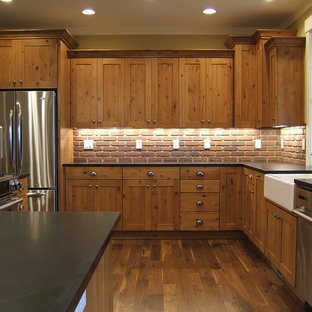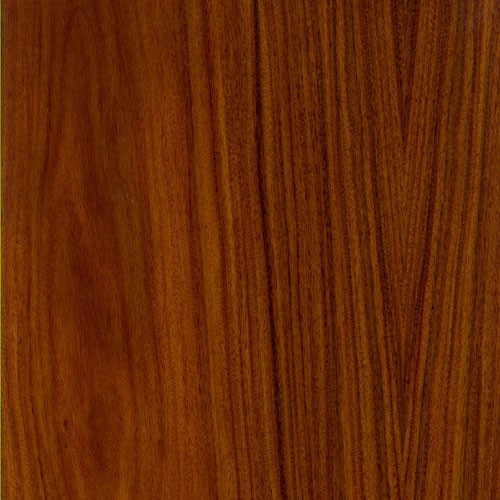East Indian Rosewood
[Dalbergia latifolia]
East Indian Rosewood earns its name from the fragrant aroma produced when it’s first cut. A light weight, but extremely hard, durable wood, it grows natively in tropical, lowland monsoonal areas throughout India, Sri Lanka, Java, and Indonesia. So, no surprise, it’s known by many names, including “Sonokeling,” “Bombay Blackwood,” “Beete,” and “Satisal.”
Whatever you call it, East Indian Rosewood is drop dead beautiful — especially the heartwood. And the species has long been celebrated as an expensive, yet beautiful wood for cabinet making.
But it’s also valued for its strength. And has been for more than 3,000 years, being used as far back as 1250 BCE to make spokes for the wheels of Chinese military chariots.
Fast forward to the mid-1960s and East Indian Rosewood became popular for making acoustic guitars as a substitute for the then-and-now-endangered Brazilian Rosewood. And today, before being harvested, the popular species is planted as an excellent shade tree, one that’s also relied on for the reforestation of eroded soils, including the improvement of nitrogen levels.
Quite similar in appearance to Brazilian Rosewood and Honduran Rosewood, the heartwood of East Indian Rosewood varies from a golden brown to deep purplish brown with darker brown streaks — all of which darken with age, usually becoming a deep brown color. The grain is usually narrowly interlocked, with a uniform, medium texture.
An elite, exotic hardwood, East Indian Rosewood tops many lists for wood veneer sheets, custom plywood, fine furniture, musical instruments, cabinetry, and turned objects.
Species Distribution:
Southeast Asia
India
Sri Lanka
Indonesia
Java
Common / Alternative Names:
Indian Rosewood
Sonokeling
Bombay Blackwood
Beete
Satisal
Janka Hardness:
2,440 lbf
Sustainability Status:
CITES Appendices: Listed on CITES appendix II under the genus-wide restriction on all Dalbergia species — which also includes finished products made of the wood.
IUCN Red List of Threatened Species: Listed on the IUCN Red List as vulnerable due to a population reduction of over 20% in the past three generations, caused by a decline in its natural range, and exploitation.
Related Species:
African Blackwood (Dalbergia melanoxylon)
Amazon Rosewood (Dalbergia spruceana)
Bois de Rose (Dalbergia maritima)
Brazilian Rosewood (Dalbergia nigra)
Burmese Blackwood (Dalbergia cultrata)
Burmese Rosewood (Dalbergia oliveri)
Cocobolo (Dalbergia retusa)
Honduran Rosewood (Dalbergia stevensonii)
Kingwood (Dalbergia cearensis)
Madagascar Rosewood (Dalbergia baronii)
Siamese Rosewood (Dalbergia cochinchinensis)
Sissoo (Dalbergia sissoo)
Tulipwood (Dalbergia decipularis)
Yucatan Rosewood (Dalbergia tucurensis)










